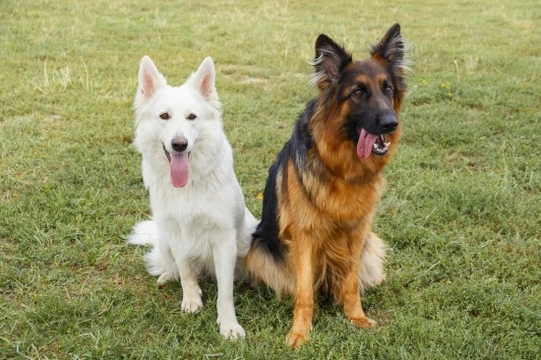
How to retrain a dog that doesn’t like other dogs
In the main part, dogs are social animals that of course lived in packs in the wild. While pack life has a great many things to recommend it, such as strength in numbers and a better chance of getting food, the socialisation and companionship aspect of the pack grouping is one of the main advantages for dogs. Given correct socialisation when young, all dogs will ultimately be welcoming of, or at least accepting of other dogs when they are properly introduced, but even so, some dogs are much more social than others.
Certain breeds and types of dogs were bred and raised for long periods of time working alone, such as when guarding or herding livestock, or when protecting property. Even so, it should not be outside of the realms of possibility for any dog to be able to play nicely and behave themselves with others, and if your dog doesn’t seem to have this down to pat, it is likely due to not enough socialisation with other dogs, or having had prior bad experiences when meeting newcomers.
If your dog is unsociable, aggressive or otherwise cannot be left to play with other dogs within reasonable circumstances, it is time to work on their socialisation skills and bring them up to speed! In this article, we will look at how to retrain a dog that does not get on well with other dogs.
What is the problem?
Before you can work on addressing your dog’s dislike of others, first of all you will need to work out what it is they do not like!
Is there a certain type of dog that seems to set your dog off, or is your dog much calmer around others when off the lead as opposed to on it? Do certain circumstances seem to prove too highly charged and stressful for your dog, and do other dogs need to get within a certain range of your dog before a problem arises? These are all things to consider!
Removing triggers
During the early stages when you are working with your dog actively to deal with their antisocial traits, keep your dog well away from exposure to any of the things or situations that you have established pose a particular problem for them.
Avoid dog parks, walks that cause you to pass in close quarters with other dogs, and going out at times when there will be a lot of other dogs on the street. In order to retrain your dog to become more accepting of others, you will need to begin in a low pressure situation, and not by playing out the type of scenario that often causes your dog to respond negatively.
Rope in some help!
In order to be able to fully control the environment where your dog meets another dog as part of your retraining, you will need the help of a friend or experienced dog owner who is prepared to work with you, and involve their dog too! Their dog should be well behaved, calm and responsive to commands, as well as totally at home with other dogs. It is a bad idea to try to use two poorly socialised or unfriendly dogs to work on each other’s issues!
Arrange to take your dog to a quiet, open area, and get them comfortable there before your friend arrives with their dog. Your friend and their dog should come along a little later, communicating with you throughout the session about how far or how near you wish them to get.
Using the space and relaxed environment you have created, work out exactly how close your friend’s dog can get to your own dog before your dog responds negatively. Praise and give treats to your dog while they are behaving well or looking alert, interested and positive, but when your dog begins to show signs of poor behaviour or unhappiness, turn the dogs away from each other and move off to a distance where your dog will once more relax.
Repetition!
Following the above procedure over a period of weeks should enable you to ultimately bring the two dogs closer and closer together, as they become more used to each other and your dog becomes more familiar with and tolerant of the other dog. Always retreat when your dog gets het up, and do not try to push things along too quickly. Once you get to the stage where your dog ignores or responds positively to the other dog in close quarters, it is time to arrange an introduction properly, off the lead, and let the two dogs make friends.
Be ready to step in if your dog becomes aggressive, but otherwise stay out of things as much as possible, and let the two dogs work out their feelings about each other and how to get on together on their own. Lots of praise, treats and affection should help to move this along! Once your dog has got used to one dog in this manner, you should be able to repeat the process with a range of future dogs, until ultimately, your dog is not bothered by the presence of other dogs in most normal situations.



